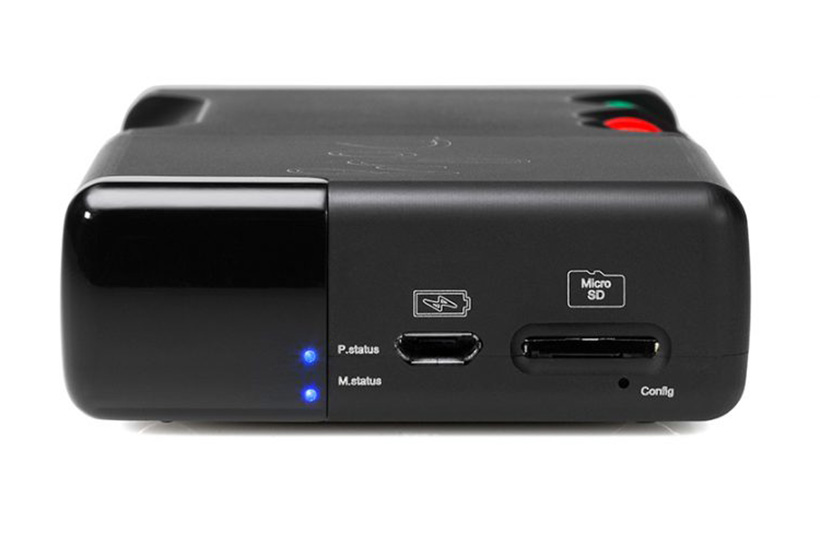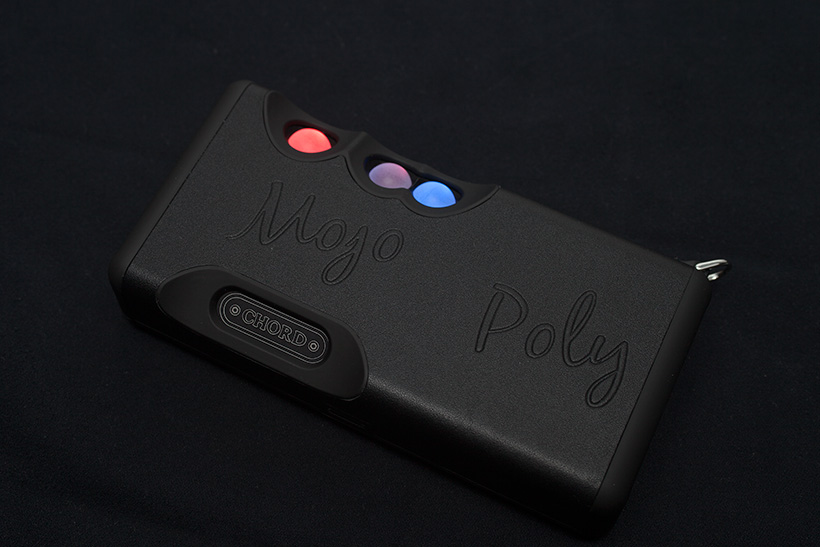The Chord Mojo DAC and headphone amp is a very nice piece of kit, compact and solid with coloured controls and amazing spec for the size and price, but it was designed to be used with a smartphone, which while undoubtedly very impressive devices are not the last word in high fidelity. A smartphone is after all a small computer with the added disadvantage, in audio terms, of being a radio frequency transmitter and receiver, in other words a source of noise which is the enemy of great sound. So Chord has come up with a remarkable lump of compact electronics called Poly which does so much it’s hard to get your head around, but I’ll try.
Poly is a portable streamer and player for Mojo that can wirelessly stream from a smartphone or network storage, eg your NAS drive, and can play from a Micro SD card. It works with wi-fi, Bluetooth and Airplay and therefore is effectively all the source you need. The Poly/Mojo combination form a standalone music source and DAC for portable or domestic use with control provided by smartphone app. Poly is a wireless streamer and network server with a rechargeable battery and the ability to do more than many full size, mains powered server/streamers can. For instance it can act as a Roon endpoint or as wi-fi hotspot creating its own network. Which given that it’s only 22mm thick is quite remarkable.

In the domestic situation you can either fill a micro SD card with music files of pretty well any format and sample rate including quad DSD (DSD256) and use an app like Bubble UPnP to tell it what to play. Or you can connect it to a drive on your home network and stream from that via Poly into Mojo and out through either of its headphone jacks to your system or headphones. If you buy Poly and Mojo together they’re supplied with a rubber case to protect and keep them connected, there are a couple of locators and two micro USBs between the two but no fixings as such, but they feel quite secure. And the pair feel appealingly chunky if a bit too much so to carry in a pocket.
Sound quality
In the system I connected Mojo and Poly to the Allegri preamp with an Audioquest Big Sur interconnect and initially used the 8 Player app to play music from a Melco server. This sounded promising with lots of dynamic energy and a strong sense of timing alongside treble that was a little on the forward side. The next session involved a Vertere Dfi interconnect and music on a micro SD card, this delivered powerful bass via the Bowers & Wilkins 705 monitors that seemed a better match than the PMCs used earlier. Here the sound is tactile and juicy, saxophone works a treat as do drums, it’s a lively sound that isn’t entirely relaxed but it’s certainly a lot of fun. So many audio products have a neutral but dry balance that seems accurate but doesn’t bring the life out in the music, the Poly/Mojo combo is rather different. A Rotel CD player I had to had produced a calmer and more relaxed result with cleaner highs, but there was no way I could run it from my phone!

The Chord pairing shares a common trait of streaming systems in that it produces lots of low level detail, making for a richer and fuller picture of the music compared to CD. Kraftwerk’s Radioactivity has lots of character in the bass and lovely scale to the reverb on this live version, it even sounds quite smooth which enhances listenability no end. Some time later I returned to the Poly/Mojo using the PMC Fact 8 speakers and Vertere cable, both of which are can be starkly revealing. The combination delivered tremendous immediacy and speed which made for an exciting if slightly edge of seat sound. On the plus side the timing is remarkably good which makes the music involving and keeps you listening regardless of the tonal balance. Going back to sourcing data from the Melco server brings a more open and refined character to the sound despite (or because of) it being a wi-fi connection. It’s still a little forward overall and for this reason I switched to an Audioquest cable which takes away some of the visceral edge but results in a smoother sound that has plenty of body and no shortage of power. Which as you know has a tendency to corrupt, as I discovered when turning volume up to max with Mojo connected to a Rega Brio amplifier. The output being somewhat higher than it could cope with meant that the result was quite unpleasant. Turning the output down to the point where the volume buttons turned blue provided a big improvement. I also gave this pairing a spin with a pair of Bowers & Wilkins P9 headphones as this is the way most users will be using them. The result was phat bass, slightly thick lower mids and lively highs with good timing once again. So a similar result to that heard through the system albeit with the character of the headphones added in.

Toward the end of the review period I got hold of a beta copy of the GoFigure app that Chord has developed for Poly, it needs a fairly up to date iDevice to run and doesn’t do what I had hoped, which is to control playback. GoFigure is primarily designed to aid set up of Poly, connect it to wi-fi and other external devices and set it up as a Roon endpoint. But you can use it to access playlists so long as there is an MPD playlist on the SD card or other source. I also discovered that there is another control app that Chord are liking called Glider for iOS.
Poly is clearly a remarkably clever piece of electronics and one that turns Mojo into a DAC for all seasons. Whether the combination can compete with some of the very slick portables on the market in terms of sound quality remains to be seen but none of them have the range of features on offer here, and that is quite an achievement in itself.


